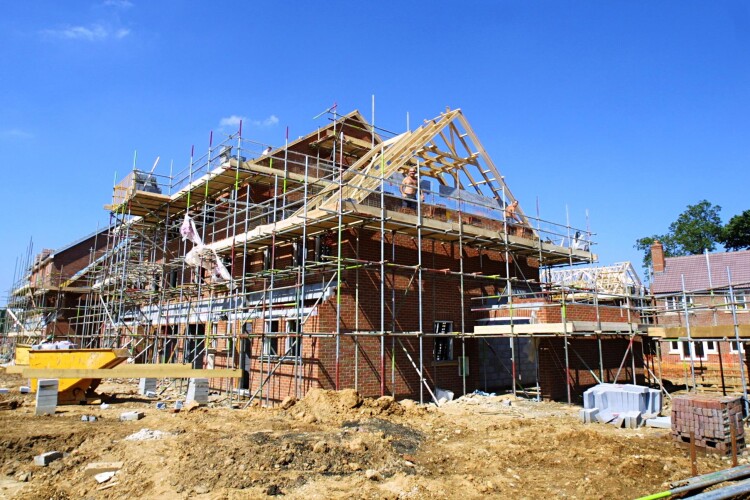The trade body for the house-building industry blames the government’s proposals to weaken planning rules “in response to lobbying by the nimby wing of the Conservative party”. As a result, 58 local authorities have withdrawn or paused local housing plans.
The Housing Pipeline report, based on data supplied by industry analyst Glenigan, comes on the fourth anniversary of Natural England’s first moratorium on house building which was introduced in an attempt to address high levels of phosphate and nitrate pollution entering rivers from new developments.
Since then, amidst a deepening housing crisis, bans on development have been imposed on 74 of England’s local authority areas, says the HBF.
According to the HBF, Natural England’s response to the nutrient neutrality issue is now holding up an estimated 145,000 new homes. This is despite Natural England’s own admission that ‘the risk from new homes is very small’ and government’s own research finding that agricultural run-off and the failure of water companies to maintain infrastructure to be the main causes of the nutrient neutrality issue.
The HBF says that, despite urging ministers to step in and agree a solution, they have failed to intervene. It now says that if unaddressed, the government’s approach to planning and nutrient neutrality could see housing supply halve to around 120,000 homes a year.
The Housing Pipeline Report shows that the downward trend in planning permission approvals seen in 2022 has continued into the first quarter of 2023. The number of housing projects granted planning permission in Q1 2023 was the lowest quarterly figure on record, with 3,037 housing projects granted planning permission. This is a 20% decline on figures from the previous year and 11% down from the final quarter of 2022, despite the number of projects approved over the course of 2022 already at the lowest level since the data set was started in 2006.
The number of units approved during Q1 2023 fell by 24% compared with the same quarter a year earlier and 17% less than the previous quarter. In England, the number of new homes approved was the lowest Q1 figure since 2014. Affordable Housing-led developments and small sites saw the greatest drop, with a 41% drop in permissions for Affordable-led schemes compared to the same quarter last year and the lowest number recorded for small sites permissioned since the dataset began in 2006.
HBF executive chairman Stewart Baseley said: “Despite the fact we face an acute housing crisis, the government’s policy approach continues to drive housing supply down. There is now clear evidence that planning permissions are plummeting, a direct result of the Governments capitulation to the NIMBY lobby on planning.

“Over the last four years ministers have failed to intervene on Natural England’s disproportionate ban on new homes, which disregards the findings of government’s own evidence and represents a major misdirection of effort and resources.
“Whilst ministers prevaricate, housing supply is tumbling and the consequences are becoming ever clearer for young people in need of decent housing and builders’ jobs.”
Natural England’s first moratorium on house building was imposed in June 2019. Since then, bans on new builds have spread to over a quarter of England’s local authority areas, affecting around 145,000 homes across 74 local authority areas from Cornwall to the Tees Valley, and a further 41,000 fewer homes will be built each year until solutions are found.

The HBF claims that the two main causes of nutrient-related pollution of rivers are run-off from agricultural activities and the failure of water companies to maintain infrastructure to deal with nutrients from other land uses. All existing development, including residential, commercial and the rest of the built environment, contributes less than 5% towards the phosphate and nitrate deposits in our rivers, it says.
The HBF is especially unhappy that the government has recently reversed a plan to reduce the use of high-nutrient fertilisers by farmers that planning permissions continue to be granted for new agricultural plants, including intensive poultry units which are known to be a major contributor of nutrients.
The HBF also criticises the government’s preferred means of providing pollution mitigation through ‘nature-based’ solutions requiring house-builders or local councils to buy farmland and remove this from production in order to reduce nutrient-related run-off.
House builders and local authorities have been forced into buying farmland in an effort to unlock new housing sites and keep staff employed, says the HBF.
Got a story? Email news@theconstructionindex.co.uk



